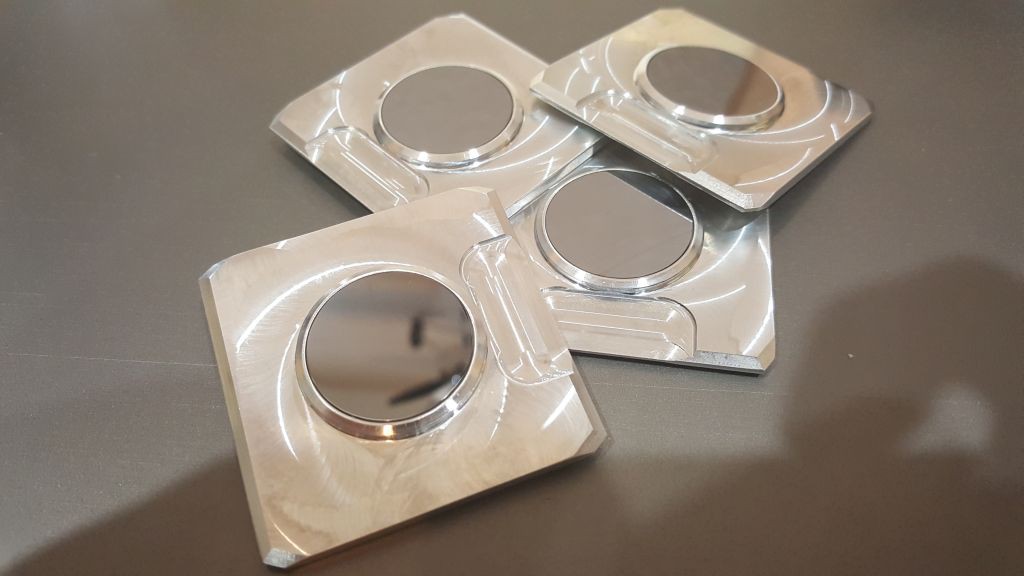The dreaded “amorphous” hump created by x-rays scattering off plastic sample holders has plagued XRD users for decades. It’s a serious enough problem that we make a good volume of these holders from Aluminum which works very well for loose powders. The plastic scatters xrays at around 13 degrees 2Theta (Cu anode tube) which make a real mess of most geological patterns and isn’t fun to model out for Rietveld refinement. Zero background holders like our ZBH-32 work wonderfully in standard sample stages designed for a single sample at a time, but the large plate isn’t compatible with the autosampler.

I recently had a request for a hybrid holder which would allow for analysis of very small volumes of materials while retaining compatibility with the autosampler. This is almost identical to our standard powder holders, but with a well designed specifically for our small ZBH plate.
Key features include:
- 6061-T6 Al material (anodized or as-machined)
- Si(510) plate
- Raised sample well minimizes the area of the sample holder in the plane of diffraction. (Original Siemens design)
- Beveled well walls minimize the area of Al in the plane of diffraction
- Other small modifications are made to improve reliability of these holders in the autosampler



